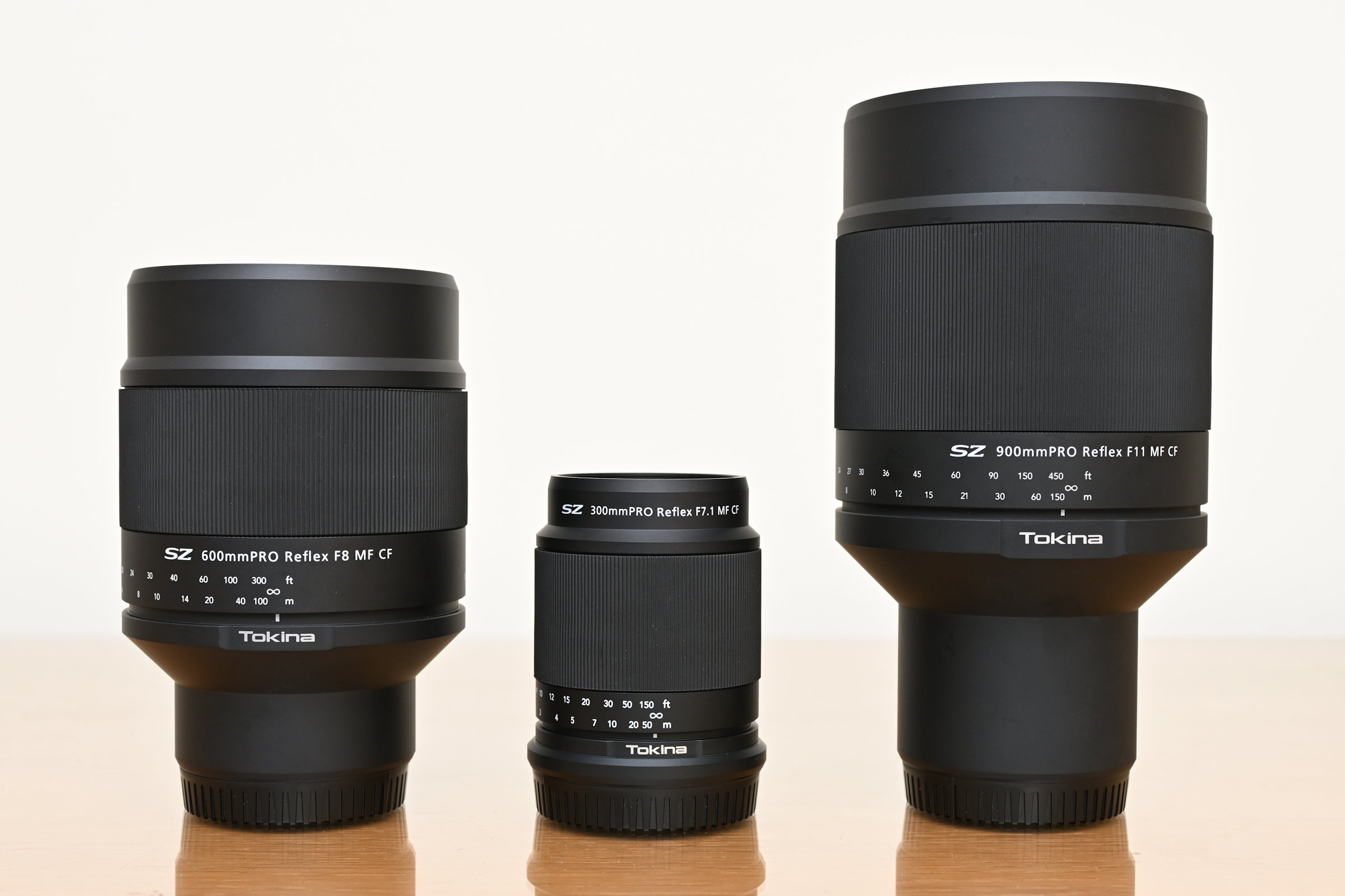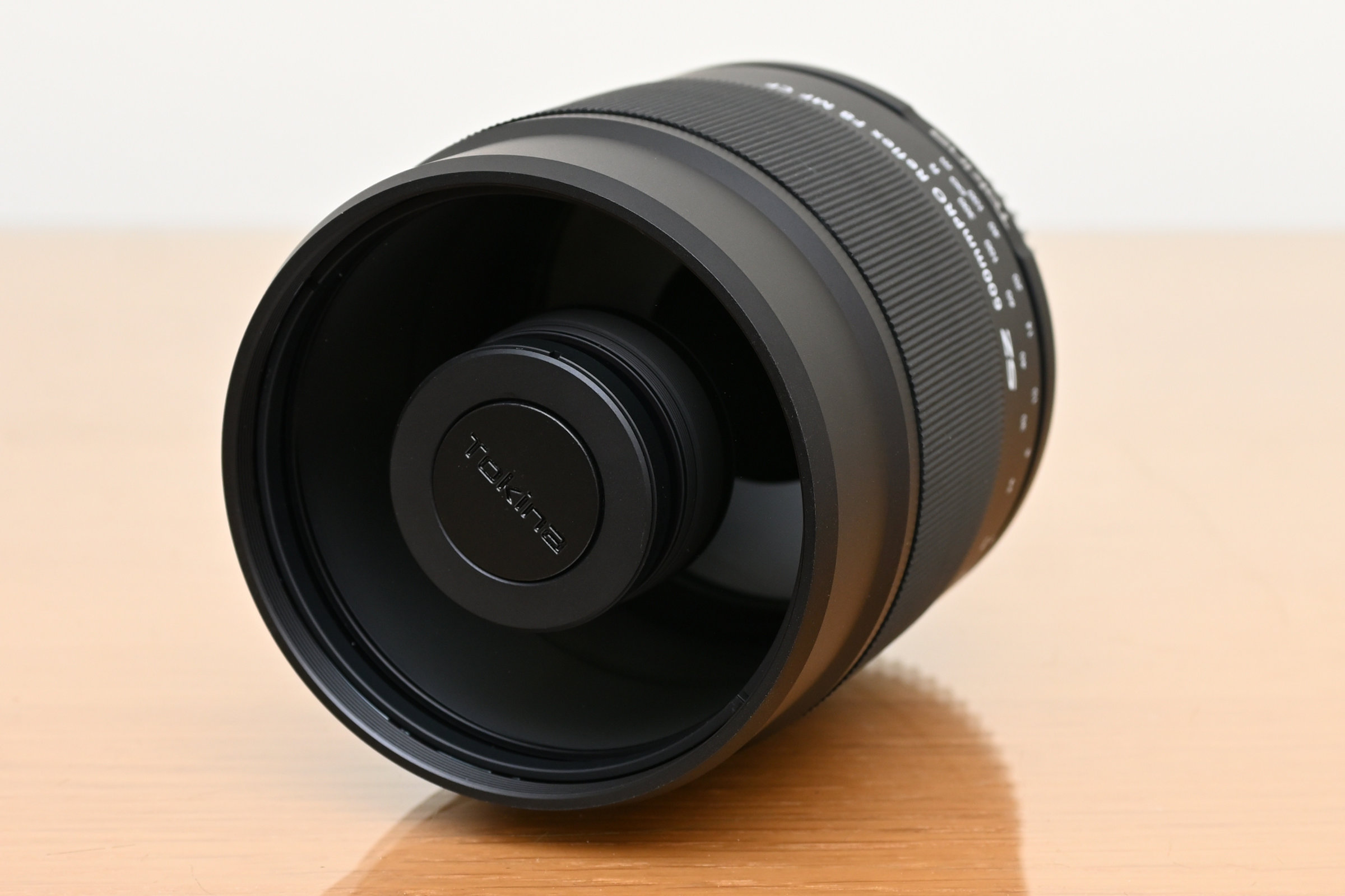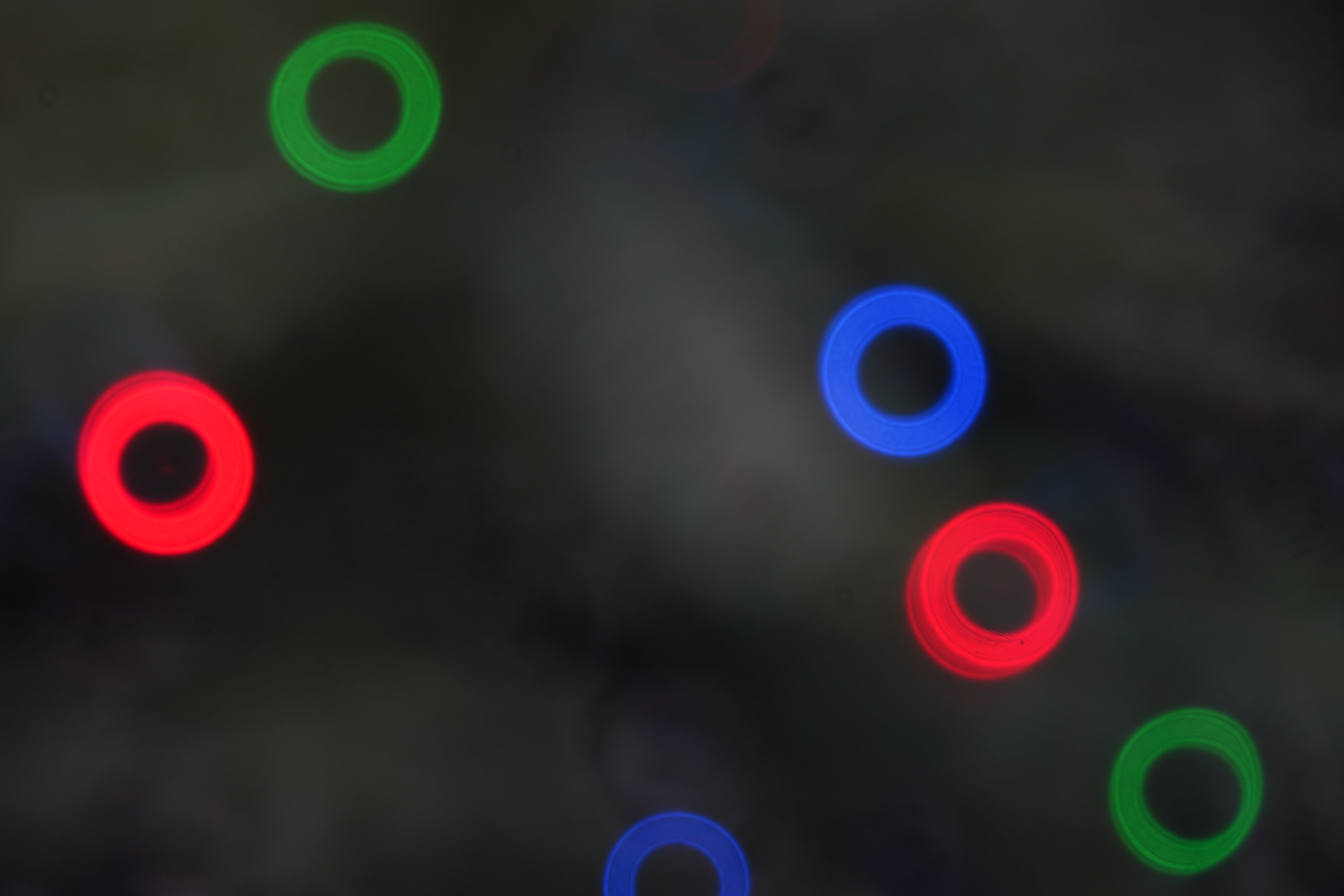
The Tokina SZ 600mmPRO Reflex F8 MF CF is a rare thing, being a super-telephoto prime that fits in the palm of your hand and tips the scales at just 545g. As a reflex or ‘mirror’ lens, it bounces the light back and forth internally before it hits the image sensor of the host camera body, enabling a much more compact and lightweight design.
It’s designed for APS-C format cameras and is available in Fujifilm X, Sony E and Canon M mount options. The 1.5x crop factor of the first two give it an effective focal length of 900mm, the Canon’s 1.6x crop factor resulting in an even greater 960mm. The lens takes up position in the middle ground of three SZ PRO reflex lenses with the same variety of mount options, the others being the tiny Tokina SZ 300mmPRO Reflex F7.1 MF CF and the frankly bonkers Tokina SZ 900mmPRO Reflex F11 MF CF.

Specifications
Mount: Canon EF-M, Fujifilm X, Sony E
Full-frame: No
Autofocus: No
Stabilization: No
Lens construction: 8 elements in 8 groups
Angle of view: 2.7 degrees (2.6 degrees Canon)
Diaphragm blades: None
Minimum aperture: f/8
Minimum focusing distance: 1.77m
Maximum magnification ratio: 0.4x
Filter size: 77mm
Dimensions: 88.6x125mm
Weight: 545g
Key features
The key feature of this lens is its catadioptric optical design. Naturally, light enters through the front of the lens but only through a ring-shaped band rather than through the whole of the front element. A mirror towards the rear of the barrel bounces the light back to a secondary mirror that sits at the center of the front element, which fires it back again towards the image sensor of the camera body. Something of a throwback to the 35mm film era, the arrangement enables a relatively compact and lightweight construction, compared with regular super-telephoto lenses.

What the lens gives in terms of downsizing it takes away in other areas, with a lot of absences on the features list. There are no built-in electronics, making communication with the host camera body impossible. However, you don’t need to worry about how you’re going to adjust the aperture because there’s no aperture diaphragm, which is typical of reflex lenses. Instead, the aperture is fixed at f/8. In practice, that’s not too hard to live with, as demonstrated by the comparatively feature-rich Canon RF 600mm F11 IS STM, which actually has a slower f/11 fixed aperture.
However, while the Canon lens has super-fast autofocus and highly effective 5-stop optical image stabilization, the Tokina has neither. Instead, focusing is a fully manual affair which makes it all but impossible to keep up with moving subjects in the genres of action, sports and wildlife photography for which super-telephoto lenses are often favored. Stick with us and we’ll come to image stabilization next.
Build and handling
Like most Tokina lenses, the SZ 600mmPRO Reflex has a reassuringly solid feel to it, although it lacks any weather-seals. Handling is best described as ‘poor’. The focus ring has a long throw but, despite this, accurate focusing demands tiny adjustments that can be troublesome and time consuming to carry out, even for perfectly static subject matter.

The lack of optical image stabilization is a mighty blow in terms of handling. You might be thinking that IBIS (In Body Image Stabilization) would come to the rescue, but you’ll have to think again. The majority of Fujifilm and Sony APS-C format cameras for which this lens is intended don’t actually have IBIS, and it’s not featured in any of Canon’s M system cameras.
We did actually try IBIS by mounting the lens on a Sony A7R III full-frame body, switching to APS-C crop mode and dialing in the relevant manual SteadyShot settings. You can’t leave it on Auto for crop mode or SteadyShot because without any electronic communication, the camera has no idea what lens is attached or its focal length. We’ll come to the effectiveness of IBIS in the next section on Performance.
Performance
As a rule of thumb, you need a shutter speed of around 1/1000th of a second or faster with this sort of effective focal length, to beat camera-shake in handheld shooting without image stabilization. Even under bright, direct sunlight, that can be very hard to achieve with a modest fixed aperture of f/8, unless you ramp up your camera’s ISO setting. We’d hoped that the IBIS of our Sony A7R III would come to the rescue but it gave a marginal benefit at best.
Along with fiddly manual focusing and the lack of effective stabilization, outright image quality is very lackluster compared with regular super-telephoto lenses. Sharpness is poor and there’s relatively little contrast, clarity and vibrancy. Aggressive image editing can improve the situation a bit in post but the raw materials that you have to work with only let you go so far. Nearly all of our real-world test shots were taken under bright, direct sunlight, but most of them looked like they were shot beneath an overcast sky.
It's not all bad news, as the Tokina does well to keep color fringing and distortion under control, while vignetting is negligible. Indeed, the image circle it produces is almost big enough to enable use on full-frame Sony Alpha cameras.
Ultimately, this lens is only worth considering if you feel the need for massive (effective) super-tele reach and desperately need to keep the carrying size and weight to a minimum. Even then, you’ll generally need to take a tripod along for the ride, which negates the space-saving potential. One plus point, however, is that the lens delivers the trademark ‘donut bokeh’ of reflex lenses, giving a different look to defocused lights and bright spots, as shown in our example shots.
Sample images






Lab results
We run a range of lab tests under controlled conditions, using the Imatest Master testing suite. Photos of test charts are taken across the range of apertures and zooms (where available), then analyzed for sharpness, distortion and chromatic aberrations.
We use Imatest SFR (spatial frequency response) charts and analysis software to plot lens resolution at the center of the image frame, corners and mid-point distances, across the range of aperture settings and, with zoom lenses, at four different focal lengths. The tests also measure distortion and color fringing (chromatic aberration).
Sharpness:

We've included all three SZ PRO tele prime lenses on a single graph so you can easily compare the trio.
We had expected the SZ 300mm to be the sharpest lens of the trio on account of its shorter focal length and corresponding ease at which it could be kept steady. However it was actually the SZ 600mm that proved to be the sharpest lens of the bunch, with center and mid-frame sharpness being acceptable, though far from truly 'sharp'. For comparison, a Canon RF 600mm f/11 IS STM scores 1855/1589/1400 for center/mid-frame/corner sharpness.
Fringing:

The SZ 600mm produces the most chromatic aberration of the three SZ PRO lenses, but even then, it's nothing major, only just reaching a level where it can be spotted under close scrutiny in real world images.
Distortion: 0.59
There's a hint of pincushion distortion, but you'll struggle to spot it in real world shooting.
Verdict
With its reflex/mirror design, this relatively compact and lightweight super-telephoto lens gives a monster 900mm effective focal length on APS-C format Fujifilm X and Sony E mirrorless cameras, boosted to 960mm on Canon M system cameras. You won’t need a steady hand so much as a sturdy tripod for reasonably sharp shots, as there’s no optical image stabilization. In the absence of autofocus, manual focusing is fiddly and even if you nail it, image quality is uninspiring.
Read more:
• Best camera lenses to get
• Best Canon lenses
• Best Nikon lenses
• Best Sony lenses







